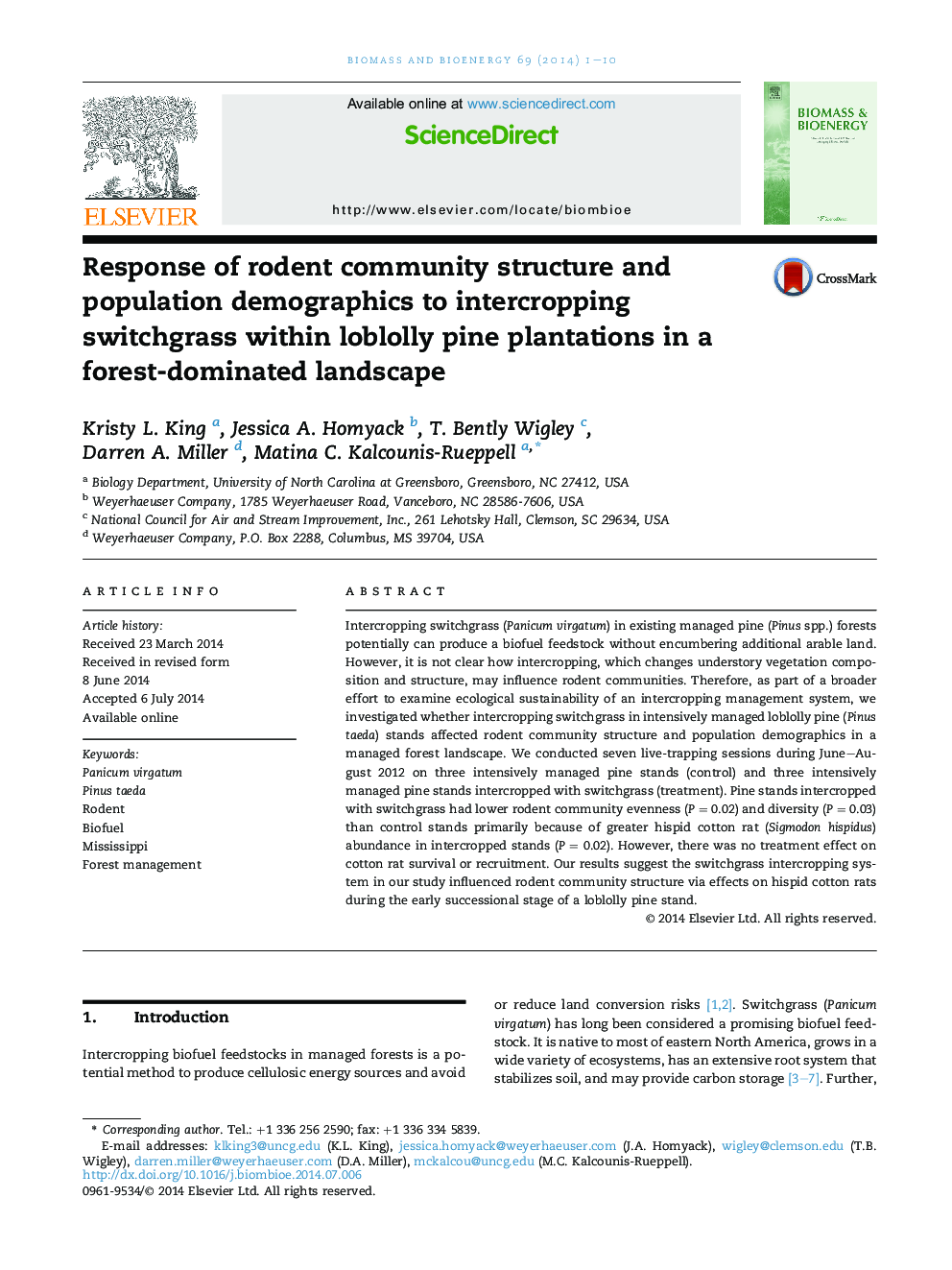| Article ID | Journal | Published Year | Pages | File Type |
|---|---|---|---|---|
| 7064364 | Biomass and Bioenergy | 2014 | 10 Pages |
Abstract
Intercropping switchgrass (Panicum virgatum) in existing managed pine (Pinus spp.) forests potentially can produce a biofuel feedstock without encumbering additional arable land. However, it is not clear how intercropping, which changes understory vegetation composition and structure, may influence rodent communities. Therefore, as part of a broader effort to examine ecological sustainability of an intercropping management system, we investigated whether intercropping switchgrass in intensively managed loblolly pine (Pinus taeda) stands affected rodent community structure and population demographics in a managed forest landscape. We conducted seven live-trapping sessions during June-August 2012 on three intensively managed pine stands (control) and three intensively managed pine stands intercropped with switchgrass (treatment). Pine stands intercropped with switchgrass had lower rodent community evenness (PÂ =Â 0.02) and diversity (PÂ =Â 0.03) than control stands primarily because of greater hispid cotton rat (Sigmodon hispidus) abundance in intercropped stands (PÂ =Â 0.02). However, there was no treatment effect on cotton rat survival or recruitment. Our results suggest the switchgrass intercropping system in our study influenced rodent community structure via effects on hispid cotton rats during the early successional stage of a loblolly pine stand.
Related Topics
Physical Sciences and Engineering
Chemical Engineering
Process Chemistry and Technology
Authors
Kristy L. King, Jessica A. Homyack, T. Bently Wigley, Darren A. Miller, Matina C. Kalcounis-Rueppell,
